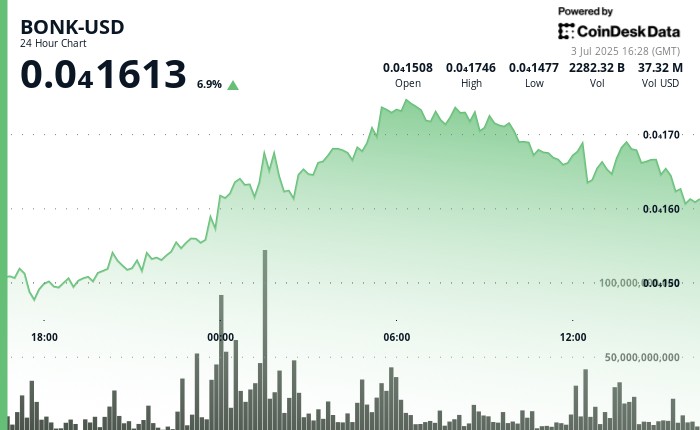Taboola's Five Key E-commerce Marketing Trends
Taboola has released new research that identifies five key e-commerce marketing trends in 2025, with retail ecommerce sales expected to exceed $US4.3 trillion worldwide with around 2.71 billion online shoppers last year.
The convergence of big data, powerful analytics tools, AI capabilities, and advances in digital advertising technology all mean that modern ecommerce companies have the tools to offer interesting, personalised experiences. Here’s more detail on how businesses are moving personalisation and customer experience forward:
With rich, first-party data, e-commerce businesses can create personalised customer experiences. Relevant data points include customer behaviour and history, along with demographic and other gathered information, to segment audiences and build tailored buyer journeys. Ecommerce businesses are also using predictive analytics and AI-powered recommendations for faster, automated customer recommendations.
E-commerce companies have to pay close attention to price, too, particularly in economically challenging times. Last year, 60% of consumers switched from a brand they were loyal to because of cost considerations.
Marketers can use all this information to surface relevant product suggestions, show unique website content in real time, send personalised messaging, use email strategically, and highlight price drops, special offers, or better cost versus competitors.
In addition to personalised experiences, modern consumers also assume they’ll get nicely designed, dependable shopping and buying journeys on any site or platform. Shoppers will quickly navigate away if a site doesn’t use responsive design for mobile or loads too slowly.
Creating pleasant browsing experiences can also help stand out from the competition, whether that’s curated collections, advice available via chat, virtual try-on, outfit or accessory suggestions, and more. Ecommerce users also require intuitive navigation and one-stop checkout. Marketers should make sure to reduce the number of steps required of a shopper to increase conversions, sales, and returning customers.
In addition, it’s important to make sure that any information a customer might need is easy to find. That includes transparent shipping and delivery data, return options, and multiple options to reach customer service. Also, offering as many payment methods as possible makes it easy for users to buy. Clear communication and an easy purchasing process also helps build trust and authority for e-commerce brands.
Here’s what else to know:
Mobile commerce has overtaken desktop browsing and continues to grow. Ecommerce keeps pushing the limit on what’s possible for shoppers and buyers, too, so here’s what to keep an eye on.
Ecommerce companies should put mobile browsing and shopping first, but also keep in mind the broader omnichannel market, and the more complex buyer’s journey that mixes online and offline browsing. A customer might buy products online and pick up in-store, or buy online and return in-store, or make part of a purchase in-store and the rest online if a product isn’t available in-person. Convenience is everything for modern shoppers. As consumers move quickly across search, social, and other platforms, it’s important to make sure the brand is represented consistently and positively and that products are also displayed consistently.
Mobile e-commerce has become commonplace, and live-streamed, real-time shopping experiences are likely to be the next big leap in many countries. It takes some creativity and innovation to stand out from the crowd with live e-commerce, such as with product demos, exclusive product offerings, and partnerships with influencers to reach more viewers.
Combining audience knowledge with available technology can lead to some positive outcomes. An app, for example, acts as an entirely owned channel to reach and convert prospects: That could include app-only offers, push notifications, and other techniques and tactics that make sense. Another new technology in circulation with ecommerce brands is AR, which can bring prospects closer to the products virtually.
Here’s what else to know:
Lots of ecommerce innovations over the past few years have been related to social media and entities outside of the traditional bricks-and-mortar businesses. Consider the following:
Ecommerce businesses have found new, varied ways to monetise social media platforms. The platforms themselves have added features so that ecommerce companies can set up direct-sale shops inside of Instagram, TikTok, and others. To make this go smoothly, make sure there are resources to support this type of selling. In addition, use the available features on the particular channel, like shoppable ads, along with contests or live shopping options to engage audiences.
Ecommerce marketers and advertisers might be driving most of a business’ tactics, but influencers can be hugely important for brands to attract new prospects and drive conversions. It’s important to choose the right influencer for the brand, and pick the partnership type (e.g. sponsored content, product collaborations, brand ambassadorship, etc.) that best fits the business, too. Influencers can help build trust, as they provide testimonials, photos, videos, and other authentic, credible content.
Measuring the ROI of social and influencers can include attribution and channel-specific numbers, so it’s easy to tell how well various tactics are working. Metrics can include the basics, like reach, engagement, and conversions.
Here’s what else to know:
Without trusted data and accompanying technology, ecommerce businesses likely can’t keep up. These broad areas of focus can help companies build successful pipelines.
With an ongoing shift away from third-party cookies, e-commerce businesses are gathering first-party data from customers — generally more accurate than third-party, and a way to build deeper relationships. Analysing this data alongside all the other information a business collects offers a window into what’s working, and what isn’t. Data points can include customer interactions, purchase history, and demographics; individual product performance, average order value, and customer lifetime value; and conversion rate along with traffic data from web, social, and other channels.
The results of analysing this data can lead to personalisation and better journeys, but also cost savings, reduced overlap or redundancy, improved customer retention, better cart completion, and more efficient campaigns.
Ecommerce marketing teams already do A/B testing to improve their metrics, but data analytics can be applied to areas like inventory management as well, and at an advanced level can provide predictions on sales trends and other areas. It’s these types of approaches that help ecommerce businesses to truly make data-driven decisions.
Ecommerce marketing isn’t a task that can be done manually in 2025: For even startups or very small businesses, the work of reaching and converting prospects intelligently and efficiently across multiple channels is simply too much. AI and other automation advances in online marketing mean that marketers can now perform data analytics and build a customer journey accordingly, then deliver and manage communications across channels, including email and social. Using marketing automation for ecommerce can streamline customer communication to eliminate excess contact, too, and many platforms incorporate AI for chatbots and assistants.
Here’s what else to know:
SEO remains a crucial piece of e-commerce customer acquisition in 2025. As the discipline continues to evolve, ecommerce marketers should build a solid strategy with new opportunities in mind.
Ecommerce teams can use SEO and AEO (answer engine optimisation, i.e., content designed to be picked up by ChatGPT or Google’s AI Overview, etc.) to attract targeted traffic, boost conversions and engagement, and build and maintain brand visibility. Paid search is also still a viable tactic, depending on budget and market saturation, but organic search serves as a low-cost, always-on channel that can steadily drive traffic.
Good ecommerce SEO and AEO practices include optimising web product pages, keyword targeting, and creating useful content for prospects at all funnel stages. Content marketers in ecommerce companies should use rich keywords in content and aim to inform and educate readers about products and trends on the path to conversion. Content marketing tactics in ecommerce range from reviews and user-generated content to video and audio.
Voice search is an emerging trend in ecommerce, as smart speakers and phone assistants become more sophisticated and useful. Consumers can shop easily (then purchase and track orders) with these hands-off options, so putting resources into voice search optimisation is something marketers should consider. Get to know the tenets of voice search, such as optimising for natural language and using long-tail keywords
Here’s what else to know:
Ecommerce marketing has already started to popularise live and social shopping, and offers a testing ground for emerging technology like AR and voice search. Ecommerce marketing trends in 2025 include the use of sophisticated data analytics, incorporation of AI, automation wherever possible, and personalisation.










